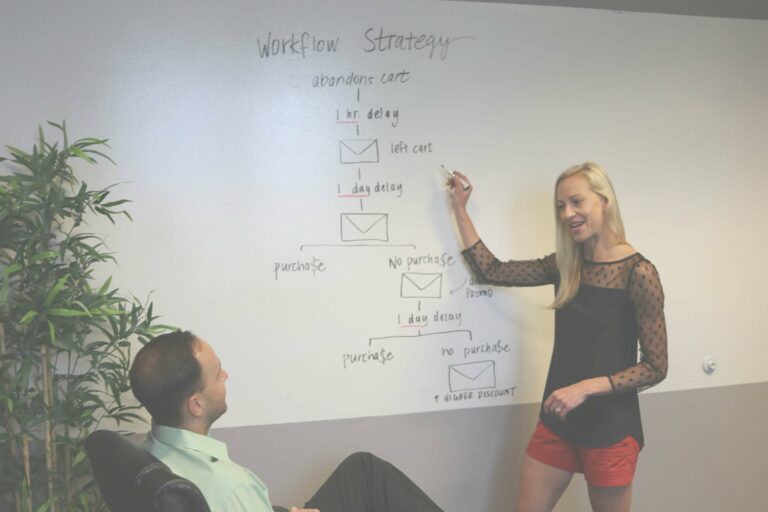Website Loading Speed Improvement: The Ultimate Guide to Faster Websites
Website Loading Speed Improvement: A Crucial Factor for Online Success
In today’s fast-paced digital world, website loading speed improvement is crucial for success online. At Web Design London, we understand the importance of a lightning-fast website and its impact on user experience, search engine rankings, and conversion rates. This comprehensive guide will explore various strategies and techniques to enhance your website’s performance and keep your visitors engaged.
A fast-loading website is essential for several reasons:
- Enhanced User Experience: Users expect instant access to information, and slow-loading pages can lead to frustration and high bounce rates.
- Improved SEO: Search engines like Google consider page speed as a ranking factor, making it crucial for better search engine visibility.
- Higher Conversion Rates: Faster websites tend to have higher conversion rates, as users are more likely to complete desired actions when pages load quickly.
- Mobile Optimization: With the increasing use of mobile devices, fast-loading websites are essential for providing a seamless experience across all platforms.
To improve your website’s loading speed, consider implementing the following techniques:
- Optimize Images: Compress and resize images to reduce file sizes without compromising quality.
- Minify CSS, JavaScript, and HTML: Remove unnecessary characters and whitespace from your code to reduce file sizes.
- Leverage Browser Caching: Implement caching to store static files on users’ devices, reducing load times for repeat visitors.
- Use a Content Delivery Network (CDN): Distribute your website’s content across multiple servers worldwide to reduce latency and improve load times for global users.
- Enable Gzip Compression: Compress your website’s files before sending them to the user’s browser, reducing transfer time.
By implementing these strategies and continuously monitoring your website’s performance using tools like Google PageSpeed Insights, you can significantly improve your website’s loading speed and provide a better experience for your visitors. At Web Design London, we specialize in creating fast, efficient, and user-friendly websites that drive results for businesses across various industries.
Why Website Loading Speed Matters
Why Website Loading Speed is Critical
Before diving into the specifics of website loading speed improvement, let’s examine why it’s so critical:
- User Experience: Slow-loading websites frustrate users and lead to higher bounce rates. This is because users expect a seamless and quick interaction with the website, and any delay can result in a negative experience[4>.
- SEO Rankings: Google considers page speed as a ranking factor, affecting your search visibility. Faster websites are more likely to rank higher in search engine results, which can significantly impact your online presence[6).
- Conversion Rates: Faster websites tend to have higher conversion rates and better engagement. When a website loads quickly, users are more likely to stay and complete their intended actions, whether it’s making a purchase or filling out a form.
- Mobile Performance: With increasing mobile usage, speed is even more critical on smaller devices. Mobile users often have slower internet connections, so optimizing for mobile is crucial to ensure a good user experience[4).
To further optimize website loading speed, it’s important to understand how different elements of your website contribute to its overall performance. For example, using direct URLs to integrate connected environments can streamline content access and reduce latency, as seen in the use of direct URLs in Oracle EPM Cloud[5).
Additionally, manually tagging your URLs with UTM parameters can help in tracking the source of your traffic and understanding how different campaigns impact your website’s performance. This can be particularly useful in Google Analytics 4, where you can use URL builders to add these parameters and collect detailed traffic-source data[4).
10 Powerful Strategies for Website Loading Speed Improvement
Top Techniques to Boost Your Website’s Performance
Improving your website’s loading speed is crucial for user experience and search engine rankings. Here are some effective techniques to enhance your site’s performance:
- Optimize images: Compress and resize images to reduce file sizes without compromising quality. Consider using WebP format for better compression.
- Leverage browser caching: Implement caching strategies to store static assets locally on users’ devices, reducing server requests and load times for returning visitors.
- Minify CSS, JavaScript, and HTML: Remove unnecessary characters, whitespace, and comments from your code to reduce file sizes and improve loading times.
- Use a Content Delivery Network (CDN): Distribute your content across multiple servers worldwide to reduce latency and improve load times for users in different geographical locations.
- Enable Gzip compression: Compress your web pages and stylesheets before sending them over the network, significantly reducing transfer time.
- Optimize your database: Regularly clean up and optimize your database to ensure efficient data retrieval and reduce server response times.
- Implement lazy loading: Load images and other media only when they’re about to enter the viewport, improving initial page load times.
By implementing these techniques, you can significantly improve your website’s loading speed, leading to better user engagement and improved search engine rankings.
Advanced Techniques for Website Loading Speed Improvement
Advanced Strategies for Website Loading Speed Improvement
For those looking to take their optimization efforts further, consider these advanced strategies to significantly boost your website’s loading speed:
- Implement Content Delivery Networks (CDNs): Utilize CDNs to distribute your website’s static content across multiple servers worldwide, reducing latency and improving load times for users in different geographical locations. CDNs can dramatically improve website performance by serving content from the server closest to the user.
- Optimize Database Queries: Streamline your database queries to reduce server response time. This may involve indexing frequently accessed data, optimizing SQL queries, and implementing caching mechanisms to store frequently requested information.
- Leverage Browser Caching: Implement effective browser caching to store static assets locally on users’ devices, reducing the need to reload these resources on subsequent visits. Configure appropriate cache headers and expiration times for different types of content.
- Minify and Compress Resources: Use tools to minify HTML, CSS, and JavaScript files by removing unnecessary characters and whitespace. Additionally, enable GZIP compression on your server to reduce the size of transferred files.
- Implement Lazy Loading: Utilize lazy loading techniques for images and other media content, ensuring that resources are only loaded as they become visible in the user’s viewport. This can significantly reduce initial page load times, especially for content-heavy pages.
- Optimize Critical Rendering Path: Identify and prioritize the critical CSS and JavaScript needed for initial page rendering. Inline critical CSS and defer non-essential scripts to improve perceived loading speed and time to first meaningful paint.
- Utilize HTTP/2 Protocol: Upgrade to HTTP/2 to take advantage of its performance benefits, including multiplexing, header compression, and server push capabilities, which can significantly reduce latency and improve overall loading speed.
By implementing these advanced strategies, you can push your website’s loading speed to new heights, providing an exceptional user experience and potentially improving your search engine rankings. Remember to regularly monitor and test your website’s performance to ensure these optimizations are delivering the desired results.
Measuring Website Loading Speed
Measuring and Monitoring Website Loading Speed
To effectively improve your website’s loading speed, you need to measure and monitor performance regularly. This process involves several key steps:
- Use performance testing tools: Utilize popular tools like Google PageSpeed Insights or WebPageTest to analyze your website’s loading speed and identify areas for improvement.
- Establish performance baselines: Create benchmarks for your website’s current performance to track progress over time.
- Monitor key metrics: Focus on critical metrics such as Time to First Byte (TTFB), First Contentful Paint (FCP), and Largest Contentful Paint (LCP) to gain insights into different aspects of your site’s loading speed.
- Implement Real User Monitoring (RUM): Use Core Web Vitals and RUM tools to collect data on actual user experiences across different devices and network conditions.
- Set performance budgets: Establish clear goals for loading times and file sizes to maintain optimal website performance.
- Conduct regular audits: Perform periodic performance audits to identify new optimization opportunities and ensure your website maintains its speed over time.
By consistently measuring and monitoring your website’s loading speed, you can identify bottlenecks, prioritize optimizations, and ensure a smooth user experience across all devices and network conditions.
The Impact of Website Loading Speed on Business
Business Implications of Website Speed
Understanding the business implications of website speed is crucial for prioritizing optimization efforts. A faster website can significantly impact various aspects of your online presence:
- Improved User Experience: Faster loading times lead to better user satisfaction, reducing bounce rates and increasing the likelihood of conversions.
- Higher Search Engine Rankings: Search engines like Google consider page speed as a ranking factor, potentially boosting your site’s visibility in search results.
- Increased Conversion Rates: Faster websites tend to have higher conversion rates, as users are more likely to complete desired actions when pages load quickly.
- Mobile Performance: With the growing prevalence of mobile browsing, a fast-loading site is essential for capturing and retaining mobile users.
- Cost Efficiency: Optimized websites often require less server resources, potentially reducing hosting costs and improving scalability.
By recognizing these business implications, you can make informed decisions about investing in website speed optimization and prioritize improvements that will have the most significant impact on your bottom line.
Common Challenges in Website Loading Speed Improvement
Common Challenges in Website Speed Optimization
When focusing on website loading speed improvement, you’re likely to encounter several challenges that can impact your site’s performance. Here are some key issues to be aware of:
- Large file sizes: Unoptimized images, videos, and other media can significantly slow down your website. Implementing efficient content management systems can help address this issue.
- Excessive HTTP requests: Too many server requests for various page elements can increase load times. Minimizing these requests is crucial for website loading speed improvement.
- Inefficient code: Bloated or poorly written HTML, CSS, and JavaScript can hinder performance. Optimizing your code structure and removing unnecessary elements is essential.
- Server response time: Slow server response can bottleneck your site’s speed. Choosing the right hosting solution and optimizing server-side scripts are critical steps.
- Lack of caching: Without proper caching mechanisms, your site may load slower for returning visitors. Implementing browser and server-side caching can significantly improve load times.
- Unoptimized mobile experience: With increasing mobile traffic, ensuring your site is optimized for smaller screens and slower connections is crucial for overall website loading speed improvement.
By addressing these common challenges, you can make significant strides in enhancing your website’s performance and user experience.
Future Trends in Website Loading Speed Improvement
Emerging Trends in Website Loading Speed Improvement
To stay competitive in the digital landscape, it’s crucial to keep up with the latest trends in website loading speed improvement. Here are some emerging techniques and technologies to consider:
- Progressive Web Apps (PWAs): Implement PWA technology to combine the best of web and mobile apps, offering faster load times and offline functionality.
- HTTP/3 and QUIC: Adopt the latest HTTP/3 protocol and QUIC transport layer to reduce latency and improve connection reliability.
- Edge Computing: Leverage edge computing solutions to bring content closer to users, significantly reducing load times.
- AI-Powered Optimization: Utilize artificial intelligence to automatically optimize images, predict user behavior, and preload content for faster experiences.
- WebAssembly: Implement WebAssembly for high-performance web applications that load and execute quickly.
- Micro Frontends: Adopt a micro frontend architecture to improve loading times for complex web applications by loading only necessary components.
By incorporating these cutting-edge techniques, you can significantly enhance your website’s loading speed and provide a superior user experience. Remember to regularly test and optimize your site’s performance to stay ahead in the fast-evolving digital landscape.
How Web Design London Can Help with Website Loading Speed Improvement
Accelerating Your Online Presence: Website Loading Speed Improvement
At Web Design London, we understand that website loading speed is crucial for user experience and search engine rankings. Our team of experts specializes in creating lightning-fast, efficient websites that deliver exceptional user experiences and drive business growth. Here’s how we can help you optimize your site’s performance:
- Comprehensive Website Performance Audits: We conduct thorough analyses to identify bottlenecks and areas for improvement in your site’s speed and performance.
- Custom Optimization Strategies: Our experts develop tailored solutions to address your specific needs and goals, ensuring maximum impact on your site’s loading times.
- Advanced Speed Improvement Techniques: We implement cutting-edge techniques such as lazy loading, browser caching, and code minification to significantly boost your site’s speed.
- Ongoing Performance Monitoring: We provide continuous monitoring and optimization to ensure your website maintains peak performance over time.
- Training and Support: Our team offers comprehensive training and support to empower your staff to maintain optimal website speed.
In today’s fast-paced digital landscape, even a one-second delay in page load time can lead to a 7% reduction in conversions. Don’t let a slow website hold your business back. Contact Web Design London today to discuss how we can help improve your website’s loading speed, enhance user experience, and boost your online success.
Conclusion
Website Loading Speed Improvement: A Key to Online Success
Website loading speed improvement is not just a technical necessity; it’s a crucial factor in your online success. A fast-loading website can significantly impact user experience, search engine rankings, and conversion rates. By implementing effective strategies and staying ahead of emerging trends, you can ensure that your website delivers the fast, seamless experience that users expect and search engines reward.
Key Strategies for Improving Website Speed
- Optimize images: Compress and resize images to reduce file sizes without compromising quality.
- Leverage browser caching: Enable caching to store static files locally on users’ devices, reducing load times for repeat visitors.
- Minify CSS, JavaScript, and HTML: Remove unnecessary characters and whitespace from your code to reduce file sizes.
- Use a Content Delivery Network (CDN): Distribute your content across multiple servers worldwide to reduce latency and improve load times.
- Enable Gzip compression: Compress your web pages and stylesheets before sending them to the browser.
Remember, optimization is an ongoing process. Regularly assess your website’s performance, stay informed about new technologies, and be prepared to adapt your strategies as the digital landscape evolves. With a commitment to speed and performance, you’ll be well-positioned to thrive in the competitive online world.
For expert assistance with your website loading speed improvement efforts, don’t hesitate to reach out to professional web design services. A team of skilled professionals can help you achieve optimal website performance and drive your business forward. By focusing on speed optimization, you’ll not only improve user satisfaction but also boost your search engine rankings and overall online presence.









